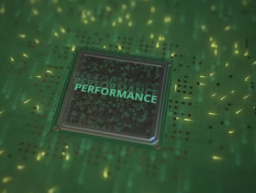Improving your computer’s performance can enhance your overall user experience. Here are several strategies to boost your computer’s speed and efficiency:
1. Upgrade Hardware
- Increase RAM: Adding more memory can significantly boost performance, especially for multitasking and running memory-intensive applications.
- Upgrade to SSD: Replacing a traditional hard drive (HDD) with a solid-state drive (SSD) can dramatically improve boot times and data access speeds.
- Graphics Card Upgrade: If you use your computer for gaming or graphic-intensive tasks, upgrading your graphics card can enhance performance.
2. Clean Up Disk Space
- Remove Unnecessary Files: Use disk cleanup tools to delete temporary files, downloads, and other unnecessary data.
- Uninstall Unused Programs: Remove software you no longer use to free up resources.
- Use Storage Management Tools: Utilize built-in tools (like Disk Cleanup on Windows or Optimize Storage on macOS) to help reclaim disk space.
3. Optimize Startup Programs
- Manage Startup Items: Disable unnecessary programs that start automatically when the computer boots up. This can reduce boot time and free up resources.
4. Update Software Regularly
- Install Updates: Keep your operating system and applications updated to benefit from performance improvements and security patches.
- Use the Latest Drivers: Ensure that hardware drivers, especially for graphics and network devices, are up to date for optimal performance.
5. Scan for Malware
- Run Antivirus Software: Perform regular scans to check for malware or unwanted software that could be slowing down your computer.
- Use Anti-Malware Tools: Consider using dedicated anti-malware programs to supplement your antivirus protection.
6. Adjust Visual Effects
- Reduce Animations: Modify system settings to reduce visual effects (like animations and transparency) that can consume resources.
- Use Basic Themes: Switching to a basic theme can improve performance on older systems.
7. Defragment Hard Drive (Windows Only)
- Run Disk Defragmenter: If you’re using an HDD, defragmenting the disk can improve file access times. Note that SSDs do not require defragmentation.
8. Optimize Power Settings
- Use High-Performance Mode: Change your power settings to “High Performance” to maximize performance (particularly on laptops).
9. Restart Regularly
- Reboot Your Computer: Regularly restarting your computer can help clear memory and refresh system processes.
10. Monitor Performance
- Use Task Manager (Windows) or Activity Monitor (macOS): These tools can help you identify resource-heavy applications and processes that may be slowing down your system.
Implementing these suggestions can substantially enhance your computer’s performance and help you get the most out of your technology.
